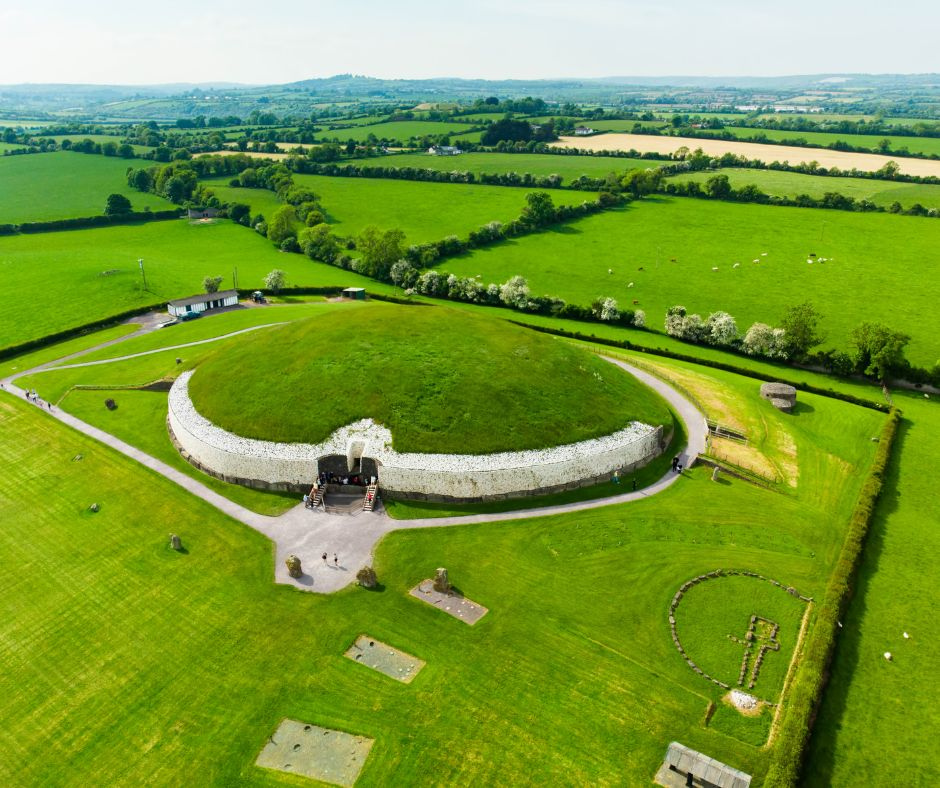Developed at Wageningen University, the NEN 2675+C1 test is the first effective benchmark that helps growers compare one climate screen with another to know which will benefit the crop most by transmitting more diffuse, growing light
Today’s NEN direct and diffuse light transmittance test helps growers get the best harvest, like a surprising echo of ancient wisdom from 5000 years ago.
Then, stone age farmers in Ireland went to great lengths, and moved a lot of soil and stone, to devise a test that would reveal the precise timing of the Spring and Autumn equinox.
The Newgrange Mound by the river Doyle in Ireland relies on the transmission of a direct beam of light which illuminates an inner chamber for just 17 minutes, indicating when daylight and night-time were equal in length.
In 2017, a research team at Wageningen University in the Netherlands made their own advance in testing.
They wanted to measure the ability of greenhouse materials to transmit not a direct light beam, but both direct and diffuse incident light, sometimes called growing light.
The NEN 2675+C1 test they devised is the benchmark that was subsequently used to establish the market-leading light transmission properties of Svensson’s Luxous and Harmony range of energy saving and shade screens.

The Newgrange Mound near the River Doyle in Ireland
With it, growers finally had a way to know which shade cloth provides the best growing conditions while admitting the most light.
For the stone age mound, the direct beam of light was key. But for modern greenhouses, the advance was to test for how much diffuse growing light was transmitted.
Gert-Jan Swinkels, Scientific Researcher at Wageningen, explains: “If you focus on direct light as a test of light penetration for greenhouse horticulture you miss the point almost completely,” he says.
“The prevailing tests were useful only for direct light falling from directly above onto a glass or a screen, and like the sunbeam in the tomb that kind of light exists only for a few moments in a month or even a year”
Gert-Jan Swinkels
Wageningen University
It was when the Wageningen researchers started work to develop a new test of growing light penetration through greenhouse roofs and screens that they found problems with the prevailing Dutch test methods.
“They were useful only for direct light falling from directly above on glass or on a screen, and that incidence exists for just a few moments in a month or even a year,” says Swinkels.
The Wageningen researchers realized that for the remaining 99% of conditions, and for novel covering materials, the light transmission test results were unhelpful and misleading. A new kind of test was required.

Gert-Jan Swinkels
The team’s work on a measurement of hemispherical, rather than perpendicular light transmission, was used by the Dutch standards institute, NEN, to create NEN 2675+C1. The new test could evaluate light in a way that was closer to real-world conditions.
At Svensson, Climate Consultant, Hugo Plaisier, has worked closely with Wageningen and also makes daily use of the NEN standards.
“The NEN standard is in everyday use in the Dutch market,” says Plaisier. “It enables growers to evaluate the absolutely best products for the job, and they care about every last tenth of a percentage point of production,” he adds.
Plaisier really wants to spread an understanding of the NEN test, which he acknowledges is not so well-known outside Netherlands. There the older and problematic test methods are still in use. The new method makes comparisons of materials much easier, says Plaisier.
Gert-Jan Swinkels still divides his time between the lab at the Wageningen campus, and a second base in the Westland greenhouse region. Another of the innovations from the Wageningen team has been the development of “Hortiscatter”, a metric which improves on the previous Haze Test.
“Haze was good for assessing the clarity of plastics, like a pair of sunglasses, but plants don’t have eyes,” he laughs.
“The crop wants photons to land on its leaves, resulting in photon flux, and providing the micromoles of photons that are the right metric to predict how much photosynthesis actually will take place,” says Swinkels.
Modern growers, like stone age farmers, deserve to have the right measure so they can grow the best crop and feed their community, he says.